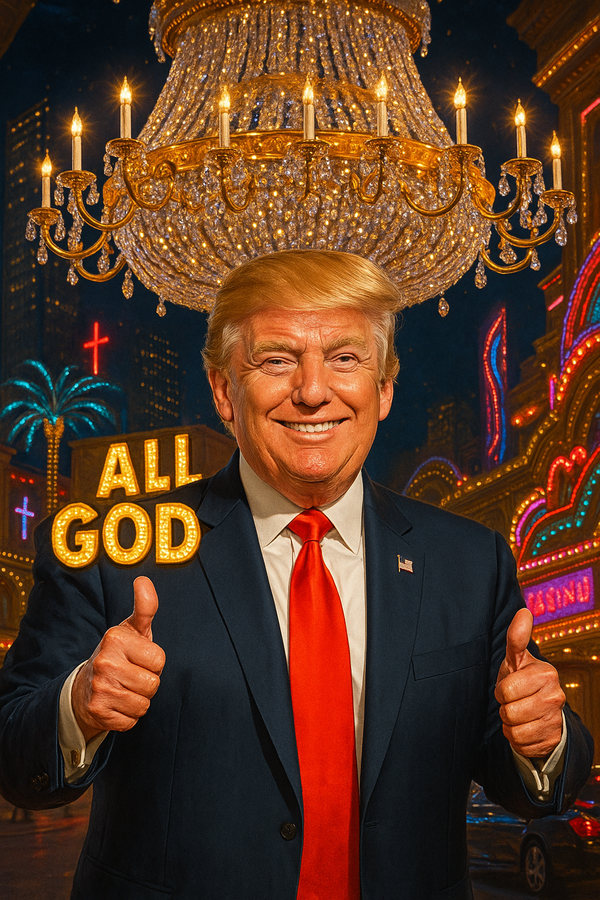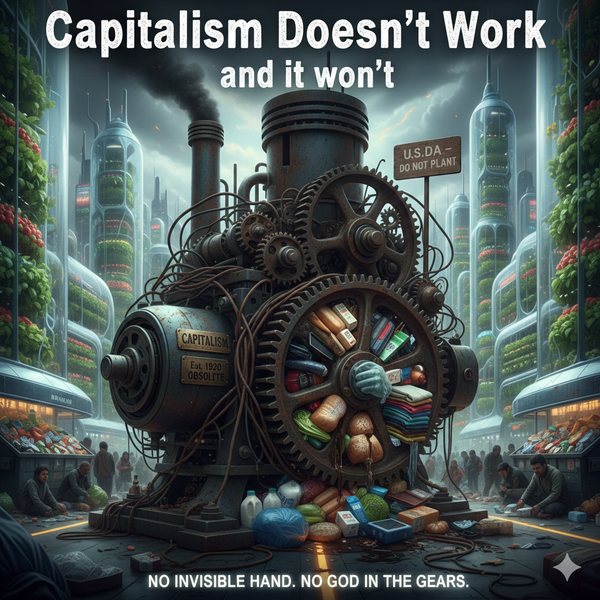The Flag Code

Summary for time constricted readers: In America, the flag is less a symbol of unity than a tool of spectacle and profit. From car dealerships to political rallies, its image is used to sell everything from trucks to ideologies—often in direct violation of the very Flag Code meant to protect it. But the Code has no teeth, and that’s the point: it offers reverence without enforcement, a perfect metaphor for performative patriotism. What began as wartime symbolism has become commercial camouflage, where polyester patriotism disguises consumer debt and cultural contradictions. The louder the flag waves, the less it seems to mean—except at the cash register.
We don’t honor the flag—we brand it, sell it, and wear it like a costume of conviction.

How to Violate the Flag and Call It Patriotism
A huge flag means one thing in this country: you've found a car dealership. The Stars and Stripes blot out the sun, flapping over asphalt and inflatable eagles—a beacon not of freedom but of zero-down financing. The bigger the flag, the harder the sell—and the deeper the loan that drowns you before you even drive off the lot. You don't just buy a truck; you lease patriotism at 12.9% APR.

The flag fetishists love their symbol so much they can't stop breaking the rules written to protect it. The Flag Code—federal guidelines Congress passed in 1942 that carry all the legal weight of a suggestion—says the flag should never be used as clothing, bedding, or drapery. Doesn't matter. Walk into any Walmart and you'll find racks of flag shirts, flag shorts, flag fucking underwear—all stitched in Chinese factories by people who've never pledged allegiance to anything but a quota. Wrap yourself in a red-white-and-blue bikini, slap a MAGA hat on top, and you're suddenly a Founding Father's dream. Forget that you're technically disrespecting the very symbol you claim to worship. Louder than words, right?

The Code says the flag should never touch the ground. Yet in every stadium across the United States, service members carry out a fabric the size of a football field, spread it across the turf, and let it sag into cleats, sweat, and spilled beer. The crowd cheers, the jets scream overhead, and the whole thing looks like a halftime show choreographed by the Pentagon. Nobody reads the fine print. Nobody cares. They just bet their asses they're being patriotic.
The point of the Code was solemn respect. What the flag fetishists have turned it into is spectacle—empty reverence performed louder, bigger, and more profitable than before. The Code has become a guidebook for how to disrespect the flag while insisting you're the only one who honors it.
The Performance
Patriotism in the United States is performance art. The flag fetishists don't salute quietly; they choreograph reverence into fireworks shows, country songs, and discount sales. The Flag Code reads like scripture, but what gets practiced looks more like a carnival.
Politicians demand the Pledge in schools, then sell the flag as campaign backdrop. They drape it behind podiums while voting to cut veterans' health care. The president salutes the flag—another violation, since the Code says civilians should place their hand over their heart, not play soldier. Reagan started that tradition, and every president since has kept it going, breaking the rules while pretending to embody them. It's not respect; it's branding. The louder the performance, the more it covers for what's missing underneath.
Car dealerships know it. Politicians know it. Corporations know it. The flag sells. It sells the illusion of unity in a fractured country. It sells the illusion of sacrifice when the only thing lost is a paycheck to a predatory lender. It sells the illusion of permanence, though the polyester unravels before the truck warranty expires.
The Flag Code never anticipated Walmart aisles stacked with t-shirts blaring "These Colors Don't Run" in dye that fades after two washes. It never anticipated candidates in flag suits that violate every line of the Code but earn every clap at the rally. It never anticipated reverence as commodity.
The Code warns against commercial use. But here's the genius: no penalties, no enforcement, no consequences. Congress wrote guidelines and called them law, knowing full well the First Amendment made them unenforceable. Perfect metaphor for the country: lofty ideals written down, routinely ignored, always profitable for someone.
The History They Don't Wave Around
The U.S. Flag Code was born in June 1923, when veterans' groups and civic clubs gathered to standardize flag treatment. Until then, states and schools made up their own rules. The Stars and Stripes risked becoming just another piece of bunting.
Congress codified these guidelines on June 22, 1942, in the middle of World War II, when symbols carried as much weight as steel and blood. The rules sounded strict:
The flag should never touch the ground.
It should not be worn as clothing or used in advertising.

It should only be flown from sunrise to sunset unless lighted.
When worn out, it should be destroyed in a dignified way—preferably by burning.
In 1942, fascism was on the march. The United States needed symbols of unity to stand against swastikas and rising suns. But even as Congress approved the Code, they knew the First Amendment meant they couldn't enforce it. The Flag Code wasn't law; it was theater, meant to project unity while the nation sent its children to die overseas.
The war ended. The guidelines stayed. The culture moved on. Courts confirmed what Congress already knew—you can burn the flag, wear it, sell it, do whatever you want with it. Free speech trumps fabric. The Code became a relic—reverence without requirement, rules without teeth. In that gap grew a new economy where the flag could be commodified as the very thing the Code forbade. What started as wartime unity theater became peacetime profit.
Polyester Patriotism
Look around. The Flag Code is a punchline. Soldiers die for the flag, but the flag gets stitched in sweatshops. Citizens burn it in protest; corporations burn it on printing presses. Politicians rail against disrespect while pinning stars and stripes to campaign koozies.
Polyester patriotism—durable enough to survive the wash, cheap enough to sell by thousands, empty enough to mean whatever the buyer wants. The flag fetishists turned the Code's toothless guidelines into a clearance aisle.
These United States don't worship the flag for what it stands for. The flag fetishists worship it for what it sells. That's not irony. That's the business model.





